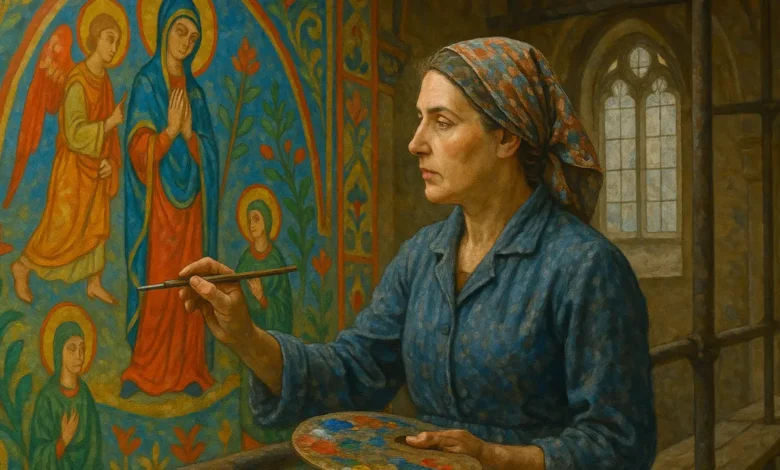Teresa Świeży-Klimecka Obituary: Honoring the Life and Legacy of a Remarkable Polish Artist

The name Teresa Świeży-Klimecka may not be universally recognized, but within the world of Polish art and cultural preservation, her legacy stands tall. As we reflect on her life and enduring influence, this comprehensive obituary seeks to celebrate her artistic achievements, community contributions, and the indelible mark she left on Poland’s cultural heritage.
Early Life and Background
Teresa Świeży-Klimecka was born on October 24, 1928, in Lwów, Poland (now Lviv, Ukraine). Raised in a time of significant historical upheaval, she demonstrated artistic talent from a young age. Her early years were shaped by the cultural richness of interwar Poland, a period that nurtured many future artists, thinkers, and intellectuals.
As a young girl, Teresa showed an affinity for colors, forms, and architectural beauty, all of which would later find expression in her mural and easel paintings. Her childhood experiences in Lwów, a city known for its eclectic artistic environment, would serve as an inspiration for her later work.
Education and Artistic Training
After World War II, Teresa relocated to Kraków, a historical and artistic hub in southern Poland. There, she enrolled at the prestigious Jan Matejko Academy of Fine Arts. Known for producing some of Poland’s most renowned artists, the Academy provided Teresa with a rigorous education in classical art techniques and contemporary artistic practices.
Under the mentorship of influential Polish painters, she honed her skills in easel painting, mural design, and art conservation. Her academic training not only refined her technical abilities but also deepened her understanding of Poland’s artistic traditions.
Career Highlights and Exhibitions
Teresa Świeży-Klimecka’s career spanned several decades, encompassing over 100 national and international exhibitions. Her work was known for its vivid color palette, spiritual depth, and harmonious composition. As both an easel painter and a muralist, she brought a unique blend of intimacy and grandeur to her pieces.
Her murals often adorn sacred spaces, public buildings, and cultural institutions. These works were not merely decorative but conveyed deep symbolic meaning, usually rooted in Polish history, faith, and identity. Her contributions to mural art earned her a reputation as a guardian of Poland’s visual culture.
Contributions to Art Conservation
In addition to creating original artwork, Teresa Świeży-Klimecka was a dedicated conservator. She performed a pivotal role in the restoration of historical wall polychromes in churches and heritage buildings. Her work in this field was both meticulous and respectful, ensuring that the original integrity of the pieces was preserved for future generations to appreciate.
For her outstanding achievements in conservation, she received several awards and honors. Her efforts were recognized not only by artistic circles but also by historians, architects, and local communities who valued her commitment to cultural preservation.
Artistic Style and Legacy
Teresa’s artistic style can be described as a harmonious fusion of realism and expressionism. Her easel paintings often featured landscapes, portraits, and religious motifs rendered with emotional depth and technical finesse. She had a keen eye for detail, and her use of color evoked both tranquility and vitality.
Her mural work was characterized by bold compositions and symbolic imagery, often designed to complement the architectural context of the space. Whether painting on canvas or plaster, Teresa approached each project with a deep sense of purpose and reverence.
Personal Life and Values
Though deeply immersed in her professional life, Teresa Świeży-Klimecka was known for her warmth, humility, and generosity. She was an active member of her local community, maintaining strong ties with fellow artists and students. Mentorship was an essential part of her life, and she took pride in guiding young artists along their creative paths.
Those who knew her personally remember her as a compassionate individual with a strong moral compass. Her art was not only a means of self-expression but also a tool for social and spiritual reflection.
Death and Public Reaction
Teresa Świeży-Klimecka passed away on January 2, 2003, in Kraków, Poland. She was 74 years old. Her passing marked the end of an era for many in the Polish art community. However, her legacy continues to inspire.
She was laid to rest in the Salwator parish cemetery in Kraków, a burial ground that houses many of Poland’s most esteemed cultural figures. Her grave, located in Sector Z, Row 3, Grave 5, has become a place of quiet reflection for those wishing to pay tribute to her life and work.
Online Tributes and Lasting Memory
In recent years, several websites and online platforms have published tributes to Teresa Świeży-Klimecka. These include EveryTalkin, Reels Media, and Digital Global Times. These platforms have highlighted her contributions to art and community, reaffirming the significance of her legacy in today’s world.
Comments from those who knew her or admired her work speak of a woman whose kindness matched her talent. Many have described her as a role model and a cultural icon whose work continues to uplift and inspire.
Final Thoughts: A Life Well Lived
The obituary of Teresa Świeży-Klimecka is not merely a record of her passing but a celebration of a life that was devoted to beauty, preservation, and community. Through her paintings and conservation work, she nurtured a deeper appreciation for Poland’s artistic heritage.
FAQs
Who was Teresa Świeży-Klimecka?
Teresa Świeży-Klimecka was a renowned Polish artist and conservator known for her mural paintings, easel work, and contributions to preserving Poland’s cultural and religious heritage. She was born in Lwów in 1928 and passed away in Kraków in 2003.
What kind of artwork did Teresa Świeży-Klimecka create?
She specialized in both mural and easel paintings, often featuring spiritual, historical, and symbolic themes. Her work is known for its vivid color, emotional depth, and strong connection to Polish identity and tradition.
Where did Teresa Świeży-Klimecka study art?
She studied at the Jan Matejko Academy of Fine Arts in Kraków, one of Poland’s most prestigious art institutions, where she received classical training in fine arts and conservation.
How did Teresa Świeży-Klimecka contribute to art conservation?
Beyond creating original artwork, she played a crucial role in restoring historical wall polychromes in churches and heritage buildings, thereby preserving the visual and cultural legacy of critical Polish landmarks.
Where is Teresa Świeży-Klimecka buried?
She is buried at the Salwator parish cemetery in Kraków, Poland, in Sector Z, Row 3, Grave 5—a resting place shared by many of the nation’s prominent cultural figures.
You May Also Read: Katerina Goltzwart: A Renaissance Woman of Modern Times




